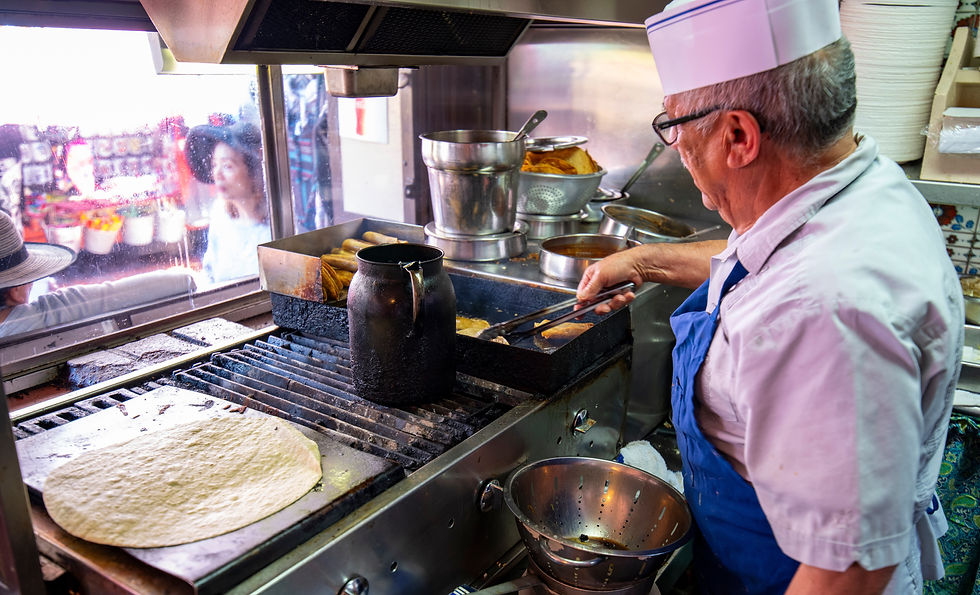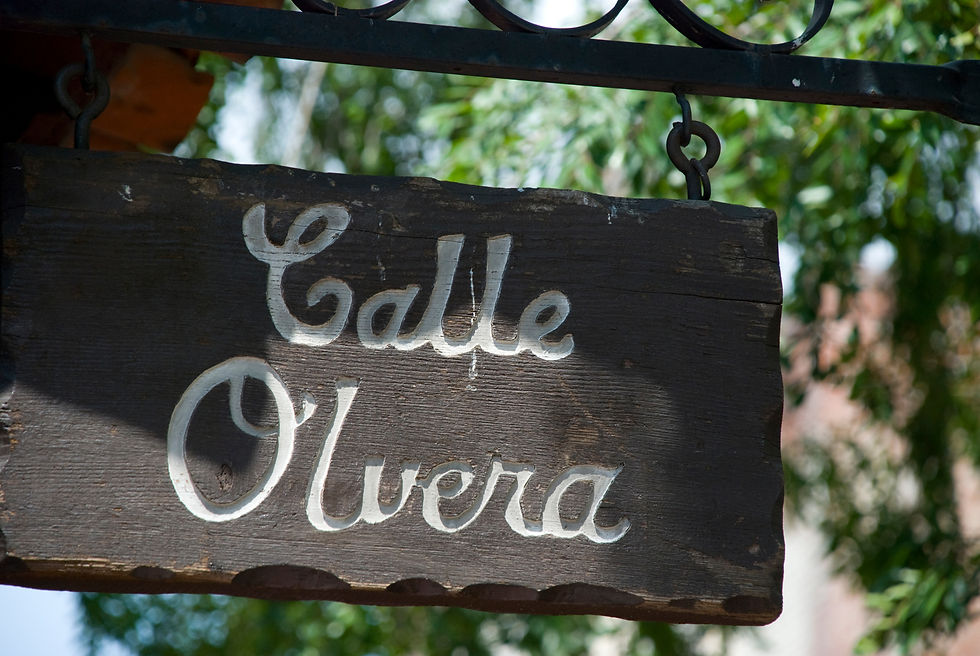Finn and Ollie’s California Timeline Adventure: Olvera Street Edition
- Dec 25, 2024
- 4 min read

After their exciting day with Charlotte and Sophie exploring the La Brea Tar Pits and delving into the prehistoric past, Finn and Ollie spent the next few weeks reflecting on their adventure. They used the time to rest and plan their next historical journey, diving deeper into California’s fascinating timeline.
"Charlotte and Sophie really sparked something in us, didn’t they?" Finn said one evening as he reviewed maps and notes.
"Absolutely!" Ollie agreed, snacking on some trail mix. "But I think we should keep moving forward through history. Let’s see what came after the fossils and saber-toothed cats."
After some discussion, they decided their next stop would take them to Olvera Street, the birthplace of Los Angeles and a vibrant hub of Mexican culture and history.
The Journey to Olvera Street
A few weeks later, the duo packed their bags and set out for Olvera Street, eager to immerse themselves in the era of Spanish and Mexican California. The cobblestone lanes, lined with colorful stalls and historical landmarks, greeted them warmly.
“This is a completely different timeline from the Tar Pits,” Finn said, adjusting his tiny guidebook. “Here, we’re stepping into Los Angeles as it was in the early 1800s.”
“And I’m stepping into churros, tacos, and history!” Ollie declared, his nose twitching as he caught the aroma of freshly made tortillas.

The Open-Air Market: A Living Tapestry of Culture
Their first stop was the bustling open-air market. Vibrant stalls overflowed with handcrafted goods, from embroidered dresses to painted pottery and colorful piñatas. Street performers played mariachi tunes, and the air buzzed with a mix of Spanish and English conversations.
“This market feels alive!” Ollie said, pausing to admire a vendor’s display of traditional leather sandals.
“It’s like a living museum,” Finn agreed. “Every stall tells a story of the people and culture that shaped Los Angeles.”
Ollie couldn’t resist sampling a freshly fried taquito. “This history lesson is delicious,” he said with a satisfied grin.
Avila Adobe (1818): A Glimpse of Early LA
Their historical tour began with the Avila Adobe, the oldest existing residence in Los Angeles, built in 1818 by Don Francisco Avila alcalde (mayor) of Los Angeles. Finn explained how the adobe was constructed to withstand the region’s warm climate. Used as Commodore Robert Stockton's headquarters in 1847, it was repaired by private subscription in 1929-30 when Olvera Street was opened as a Mexican marketplace.
“Imagine living here during the days of Spanish rule,” Finn said, pointing out the thick adobe walls and simple furnishings.
Ollie peeked into the kitchen. “I wonder what meals they cooked here. Do you think they had snacks like mine?”
“Probably not trail mix,” Finn said with a laugh. “But they did make plenty of fresh tortillas and beans.”
Pelanconi House & Pelanconi Warehouse (1857): From Bricks to Stories
Next, they visited the Pelanconi House, the first brick house built in Los Angeles in 1857. Now part of a restaurant, the house was a favorite stop for history and food lovers alike.
“This place has so much charm,” Finn said, running a paw along the sturdy brick walls. “It’s amazing to think these bricks were handmade over 150 years ago.”
Ollie was already glancing at the menu. “Do you think the food has aged as well as the house?”

Sepulveda House (1887): A Victorian Blend
Their final historical stop was the Sepulveda House, a 22-room Victorian home built in 1887. The blend of Mexican and American styles showcased the evolving culture of Los Angeles at the time.
“This house tells a story of transition,” Finn said, admiring the intricate woodwork. “It reflects how Los Angeles was growing and changing.”
Ollie leaned in to examine an old photograph. “I wonder what the kids back then did for fun. Did they have adventures like ours?”
Antonio Aguilar: A Cultural Icon
Before leaving, Finn and Ollie paused at the statue of Antonio Aguilar, a beloved Mexican singer and actor who celebrated the spirit of his heritage. Inspired by his legacy, Ollie hummed one of Aguilar’s famous ranchera tunes, drawing smiles from passersby.
“This is what makes history so special,” Finn said. “It’s not just about places—it’s about the people who shaped them.”
A New Chapter in Their Adventure
As they left Olvera Street with souvenirs in hand and hearts full of stories, Finn and Ollie reflected on the rich tapestry of California’s past.
“We’ve traveled from the prehistoric Tar Pits to the vibrant streets of early Los Angeles,” Finn said. “What’s next on our timeline?”
“Wherever it is, I hope it’s just as tasty!” Ollie said, nibbling on a churro.
And with that, they set off, ready for the next stop on their journey through California’s incredible history.
Olvera Street Visitor Information Summary
🌟 Location:845 N. Alameda St., Los Angeles, CA 90012Located in the heart of Downtown Los Angeles, within El Pueblo de Los Angeles Historical Monument.
What to Do
Explore the Open-Air Market: Stroll through colorful stalls offering handmade crafts, traditional Mexican clothing, pottery, and more.
Visit Historical Landmarks:
Avila Adobe (1818): The oldest standing residence in LA.
Pelanconi House (1857): LA’s oldest brick house.
Sepulveda House (1887): A Victorian-style home turned museum.
Enjoy Authentic Mexican Cuisine: Grab a bite from local restaurants serving tamales, tacos, churros, and other Mexican favorites.
Hours
Open Daily:
Shops and vendors typically operate from 10:00 AM to 6:00 PM.
Restaurants may have extended hours.
Admission
Free: No entry fee to explore Olvera Street or the historic sites.
Some museum exhibits may request donations.
Getting There
Public Transit:
Take the Metro (Red, Purple, or Gold Lines) to Union Station. Olvera Street is a short walk away.
Parking:
Paid parking is available in nearby lots, such as the El Pueblo Lot or Union Station East Lot.
Events
Olvera Street hosts year-round cultural celebrations, including:
Dia de los Muertos (Day of the Dead)
Las Posadas (Christmas Procession)
Cinco de Mayo Festivities
Tips for Visitors
Bring cash, as some vendors may not accept cards.
Wear comfortable shoes for walking the cobblestone paths.
Take time to enjoy the mariachi performances and street entertainment.
Contact
Website: elpueblo.lacity.org
Phone: (213) 485-8372
Experience the vibrant history and culture of Los Angeles at Olvera Street—a destination for the whole family! 🎉




Comments